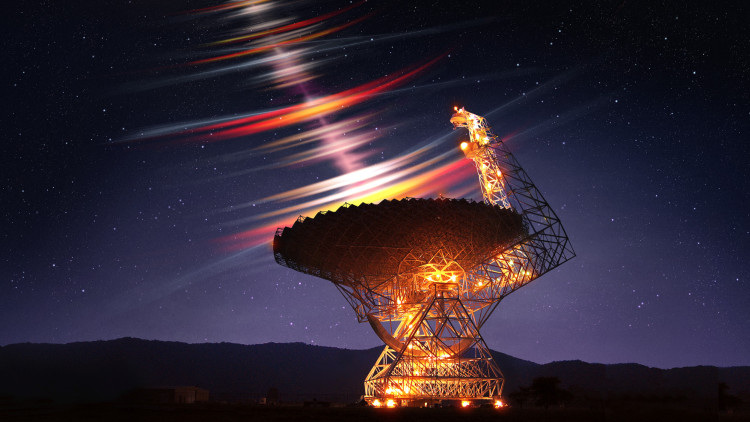An international team of researchers led by Dutch PhD student Mark Snelders (ASTRON and University of Amsterdam) has discovered radio pulses from the distant universe lasting only millionths of a second. They found these millisecond flashes after carefully examining archival data from a known millisecond source. It is not clear how ultrafast flashes are created. Astronomers publish their results in Nature astronomy.
Fast radio bursts (FRBs) are unpredictable, very short bursts of radio waves located far beyond our Milky Way Galaxy. They may be caused by magnetic neutron stars, or magnetars. The first flashes were discovered in 2007. So far, flashes have been seen lasting more than a millisecond and emitting as much energy as our Sun in a single day.
In 2022, researchers from the University of Amsterdam and Astron realized that there may be flashes that last not thousandths, but only millionths of a second. “We talked about it a lot during our group meetings,” says Mark Snelders, a doctoral candidate at Astron and the University of Amsterdam, and leader of the study that discovered ultrafast flashing. “By chance, I discovered that there is a public data set that we can use for this purpose. We examined it with a dust comb.”
Five hours of data
The Dutch researchers used a public archive for Breakthrough Listening, a project aimed at searching for extraterrestrial life. This archive, from the Green Bank Telescope (USA), contains five hours of data from the famous recurring radio flash FRB 20121102A, located about three billion light-years away in the direction of the Vorman constellation.
The data from a radio flash can be compared to a movie. The researchers divided each second of the first thirty minutes of data into half a million separate images. They then looked for outliers using software filters and machine learning. They discovered eight ultrafast flashes that lasted only ten millionths of a second or less.
Now that the first ultrafast microsecond flash has been demonstrated, researchers expect to find more of these types of flashes. Although this is not that easy, because some data files are too coarse to be cut into half a million pieces per second.
Ultimately, the researchers want to use the flashes to create a kind of map of the distance between stars and galaxies. Such a map will help them better understand how galaxies are fed by the gas surrounding them.
Scientific material
Detection of ultrafast radio bursts from FRB 20121102A. By: M. B. Snelders et al. Nature astronomyOctober 19, 2023. [origineel | preprint]
 Artistic imaging of microsecond flash detection. In the foreground is the Green Bank Telescope (USA) used for research. Incoming radio waves are displayed as white, red, and orange lines that follow each other in quick succession. Long red lines were previously known as millisecond flashes. (c) Daniel Futselaar/www.artsource.nl [hoge resolutie liggend | hoge resolutie staand]
Artistic imaging of microsecond flash detection. In the foreground is the Green Bank Telescope (USA) used for research. Incoming radio waves are displayed as white, red, and orange lines that follow each other in quick succession. Long red lines were previously known as millisecond flashes. (c) Daniel Futselaar/www.artsource.nl [hoge resolutie liggend | hoge resolutie staand]

Evil tv scholar. Proud twitter aficionado. Travel ninja. Hipster-friendly zombie fanatic.

